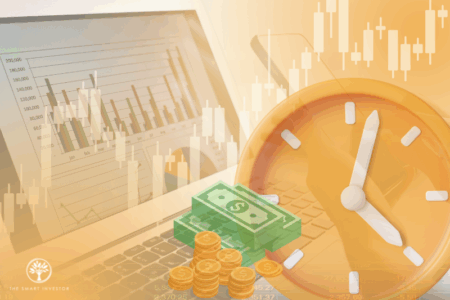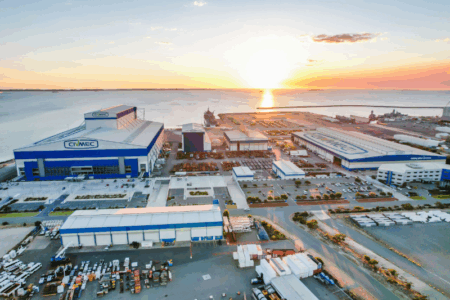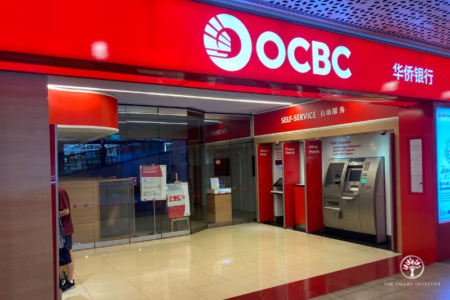When I heard of long, snaking queues forming outside of United Overseas Bank (SGX: U11), or UOB, branches back in September, I thought it was the bank touting some free limited-edition gift.
Instead, I was amused to learn that it was about the bank’s 2.7% fixed deposit rate.
Some queues lasted around four hours, nothing to sneeze at if you’re a housewife or house husband rushing home to cook lunch.
UOB was not the only bank to offer these rates.
Back then, OCBC Ltd (SGX: O39) was also offering promotional interest rates of 2.3% for a 12-month fixed deposit tenure.
Soon, the Malaysian banks have also joined the fray, with Maybank (KLSE: 1155) and RHB Bank (KLSE: 1066) offering promotional rates of between 2.35% and 2.7%.
And it’s not just fixed deposit rates that have risen.
Savings account balances are also attracting the highest rates in 15 years.
Singapore’s largest bank, DBS Group (SGX: D05), raised the interest rate for its flagship Multiplier savings account by up to 4.1% on the customer’s first S$100,000.
Not to be outdone, OCBC upped its highest interest rate tier to 4.65% on the same amount.
While attractive, these eye-watering rates come with a list of terms and conditions to fulfil, including spending, saving, and purchasing an insurance or investment product.
It begs the question, are these returns as lucrative as they seem?
No free lunch in the world
There is a price to pay for higher interest rates.
With all these offers being dangled in the media, has anyone ever stopped to think about the flip side?
Because the only reason that banks are willing to offer you “risk-free” returns is that they can charge you higher rates on the loans you take up.
You see, banks are in the business of lending out money to generate healthy returns for their shareholders.
A quick check shows that mortgage rates are sharply higher in recent months as the US Federal Reserve hikes interest rates to combat soaring inflation.
Just last month, the trio of local banks announced that fixed rates for mortgage loans will be raised to a maximum of 3.85%.
It’s almost a tripling of the base rate for a homeowner who signed on a fixed-rate loan package for 1.3% last September.
Meanwhile, let’s not forget that the US central bank has committed to continue raising rates, albeit at a slower pace than its previous “jumbo” 0.75 percentage point hikes.
Hence, it could get even more costly for those with mortgage or car loans in time to come.
An onerous undertaking
To top it off, it’s also difficult to fulfil all the conditions required by the banks to enjoy the highest tier of savings rate.
Not many of us will purchase an insurance product every month, make an investment, or spend up to a certain amount.
Fixed deposits also come with their conditions.
First off, these deposits come with fixed tenures, implying that you cannot easily access your funds unless you do not mind forfeiting the entire interest.
Second, many of the banks also specify a minimum amount of, say S$20,000, for depositors to enjoy these rates.
These terms and conditions are giving me a headache to track and let’s not forget that they can also change according to the whims of the banks and as economic conditions evolve.
Being an owner versus a customer
It may sound strange, but I’ve always believed that it’s better to own part of the bank than to be a customer.
Let’s take Singapore’s largest lender, DBS Group, as an example.
The bank’s share price has climbed 8.3% in the past year while the bank has posted record earnings from the uplift in interest rates.
Owning the lender’s shares also means you are receiving a dividend yield of 4.1%, paid quarterly.
The minimum sum you need to invest to be a shareholder of DBS is just S$3,500 for 100 shares, unlike the S$20,000 needed to place a fixed deposit.
But you know what’s the most attractive part of all?
It’s that DBS has the potential to continue growing its business for the foreseeable future.
And when it does so, its share price will also rise in tandem, bestowing capital gains to its shareholders.
Another bonus comes in the form of rising dividends, as the bank has a track record of raising them over the years.
These promotional savings and fixed deposit rates may soon vanish as global interest rates eventually head down.
But if you park your money in good investments, you can always feel confident of not just beating inflation, but also building wealth that can carry you through your retirement.
Investing for the long term
In the short-term, these risk-free options may seem attractive.
But if you want to grow your wealth in the long run, it’s a better choice to park your money in strong, dependable stocks that can multiply your wealth.
If you’re looking to invest in 2023, our latest FREE report can guide you. It shows you how to find dividend stocks in SGX, and a nearly fool-proof way of building your portfolio. Many people love dividend investing, but few truly know how to profit from it consistently. Click the link here to download our new report and discover the secrets!
Follow us on Facebook and Telegram for the latest investing news and analyses!
Disclaimer: Royston Yang owns shares of DBS Group.





